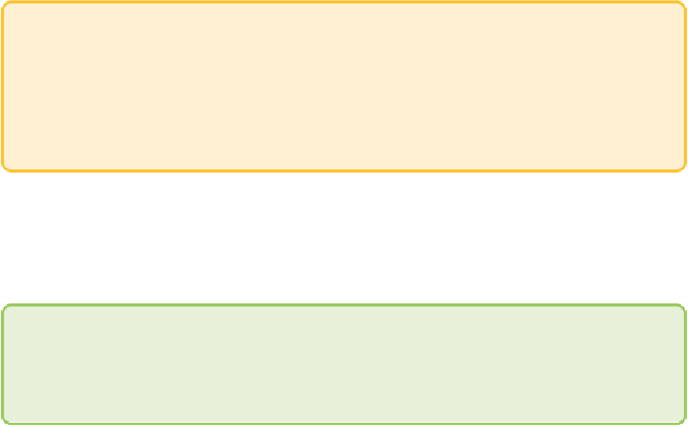Graphics Reference
In-Depth Information
to railway ties at regular intervals along rails), and borders are dashed
(indicating an intangible feature). To an extent, like icons, these are learned
vocabularies, but their form reminds the analyst physically of what they
represent.
The second principle is that application of line style is rarely combined
with application of color. Railway lines and borders are drawn in gray,
operating as a second order to the principle order of roads, which use color
to differentiate levels of hierarchy within the network.
The exception to the rule of not combining line style and color (and the
third principle) is that dotted lines virtually always refer to an insubstantial
version of the same class of item shown in solid, whether that is because
they are planned but not yet made or because they are highly uncertain or
unreliable.
Tip
You can use line styles in gray that use symbolic reference to hint at
what is being represented as a complement to the use of color in
differentiating link types. You can use dotted lines to indicate uncertain
or otherwise insubstantial links.
Line Width
Line width is an obvious choice for indicating strength of relation or volume
of flow, depending on the data being represented. Similar to node size, line
width should only be mapped to magnitude values.
Note
Line width figures significantly in the visualization of flows. Chapter 12
is devoted to flow-focused graphs, including Sankey diagrams.
Unless a Sankey diagram is the form of choice, the variation in line width
will need to be relatively small. With only a few pixels to work with, if it is
informative to do so, line widths can be quantized to represent ranges of
data. For example, if links represent cash flow from $1 to $100,000, rather
thansimplyscalinglinewidthlinearlybasedonamount,youcanchooseline
widths categorically based on the range that values fall into—$1 to $25,000;
$25,000 to $50,000; or $50,000 to $100,000.

